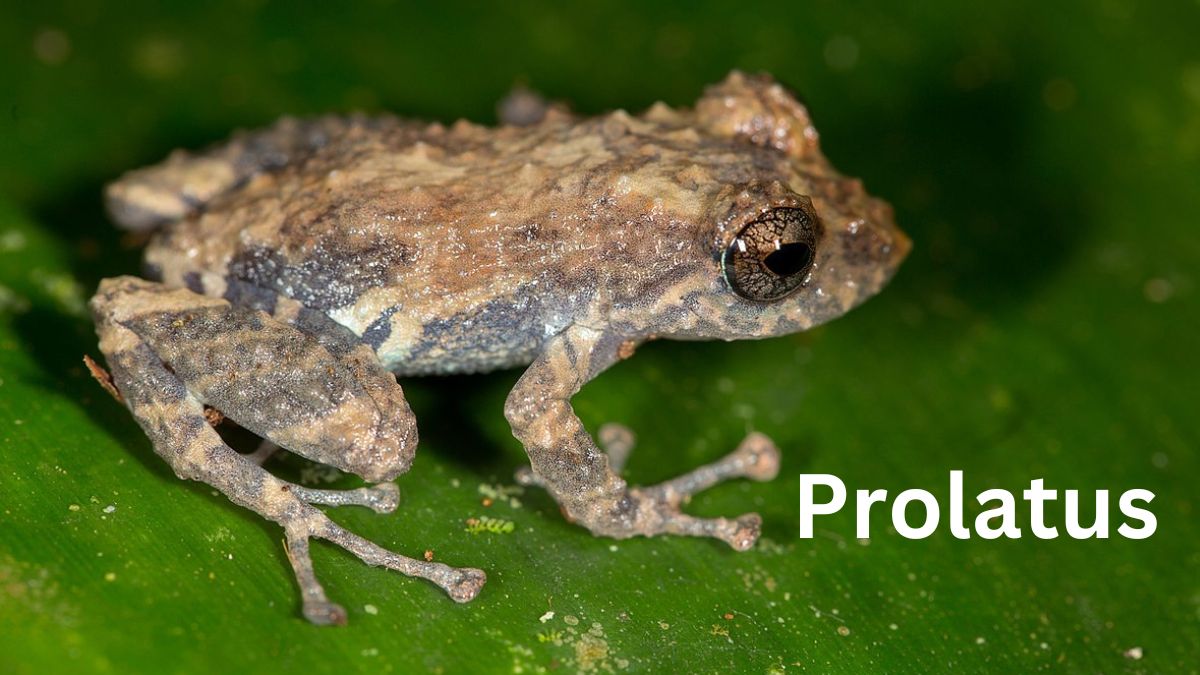Pristimantis prolatus, also known as the leaf-litter frog, is a unique species of terrestrial frog found in South America. They are nocturnal, primarily feeding on insects and small invertebrates. They have natural predators such as snakes, birds, and some mammals. Pristimantis prolatus communicates through vocalizations and calls. Their unique features and ecological importance make their conservation a vital endeavor. Threats include climate change, habitat destruction, and disease. Individuals can help conserve Pristimantis prolatus by supporting conservation efforts, reducing habitat destruction, and raising awareness.
What is Pristimantis prolatus?
Pristimantis prolatus, also referred to as the “leaf-litter frog,” is a terrestrial frog species classified within the family Strabomantidae. This amphibian species is commonly referred to by its taxonomic name, which is derived from its notable physical characteristics and specific ecological demands.
Taxonomy and Classification
Within the field of taxonomy, Pristimantis prolatus is categorised within the genus Pristimantis, which encompasses a diverse array of frogs that have demonstrated remarkable adaptability to many ecological settings. The exploration of taxonomy is crucial in order to have a comprehensive understanding of its interconnections with other species and its evolutionary lineage.
Distribution and Habitat
The habitat and distribution of Pristimantis prolatus exhibit notable characteristics. The distribution of these frogs encompasses several South American nations, namely Colombia, Ecuador, Peru, and Bolivia. The versatility of these organisms enables them to flourish in a wide range of environments, spanning from tropical rainforests to cloud forests.
Physical Characteristics
Pristimantis prolatus has distinctive morphological characteristics. The diminutive dimensions of these organisms, often ranging from 2 to 3 centimetres, coupled with their cryptic colours, contribute to their effective concealment within their leafy environments. Let us further explore the physical characteristics of the subject in question and examine the underlying factors contributing to its unique attributes.
Behavior and Ecology
Gaining a comprehensive understanding of the behaviour and ecology of Pristimantis prolatus is crucial in order to fully comprehend their significance within the ecosystem. The frogs exhibit primarily nocturnal behaviour and display distinct patterns of foraging, territoriality, and communication.
Reproduction
The process of reproduction in Pristimantis prolatus is a fascinating phenomenon. In order to enhance the survival prospects of their progeny, these organisms adopt a diverse array of reproductive methods. This section will elucidate the breeding behaviours of the subject species and the many problems encountered by them.
Importance in Ecosystem
The little amphibians in question fulfil a noteworthy function within the ecological system. The dietary preferences and predation behaviours of these organisms play a crucial role in regulating insect populations, so contributing to the preservation of a fragile ecological equilibrium. This study aims to examine the influence of these organisms on the food chain and the wider ecological system.
Conservation Status
The conservation status of Pristimantis prolatus is a subject of significant concern. The hazards of habitat loss and pollution are of considerable significance. There are ongoing endeavours being undertaken to save these distinct organisms. This section will examine the conservation state of the subject and the current conservation activities being undertaken.
Threats and Challenges
Pristimantis prolatus is confronted with a range of challenges, encompassing climate change, habitat degradation, and disease. In this discussion, we will explore the several problems that pose a threat to the continued existence of this extraordinary amphibian species.
Research and Discoveries
Ongoing research has unveiled new aspects of Pristimantis prolatus, from their behavior to their genetic diversity. In this section, we shall discuss the significance of current scientific findings.
Unique Features
Just what is it about Pristimantis prolatus that makes it so distinctive? This section will discuss the characteristics that set them apart as a species, such as their preferred habitat and vocalisations.
Role in Biodiversity
To maintain biodiversity, an ecosystem’s species must work together. Pristimantis prolatus plays an important role in the web of life. Their importance in preserving biodiversity will be discussed.
Conclusion
In conclusion, Pristimantis prolatus exemplifies the beauty of biodiversity by virtue of its unique traits and consequential ecological role. Their well-being depends on the stability of the habitats they call home, so protecting those ecosystems is crucial to ensuring their existence.
FAQs
Are Pristimantis prolatus poisonous?
No, Pristimantis prolatus are not considered poisonous to humans.
What is the primary diet of Pristimantis prolatus?
They primarily feed on insects and other small invertebrates.
Do Pristimantis prolatus have any predators?
Yes, snakes, birds, and some mammals are their natural predators.
How do they communicate with each other?
Pristimantis prolatus communicate through a series of vocalizations and calls.
What can individuals do to help conserve Pristimantis prolatus?
Supporting conservation efforts, reducing habitat destruction, and raising awareness are crucial steps in conserving this species.











